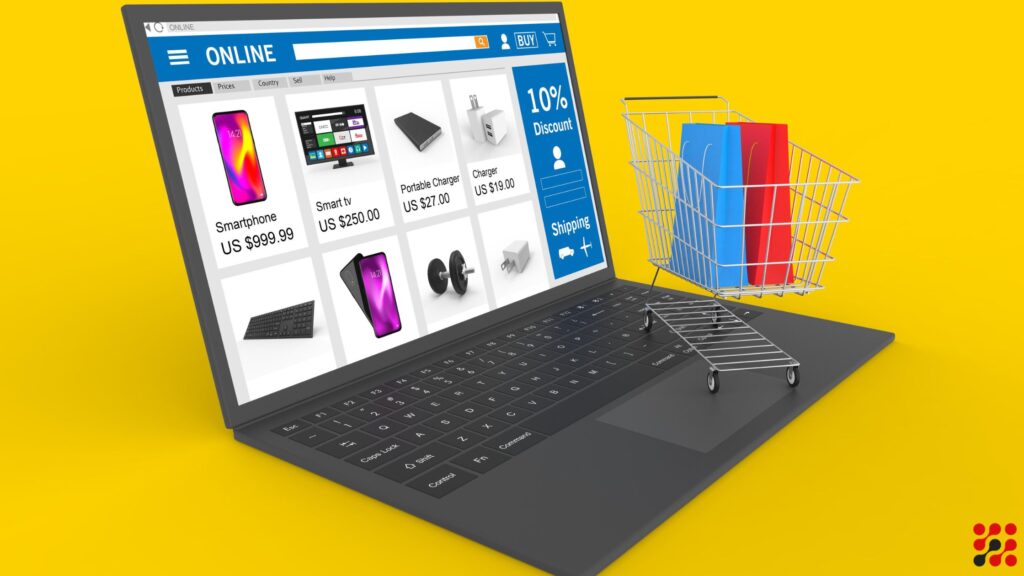Are you dreaming of managing WooCommerce multistore from one dashboard?
Whether expanding your WooCommerce development or looking for ways to automate your WooCommerce multiple stores.
In this guide, we’ll explore everything you need to know about multistore WooCommerce, from its benefits and how to set it up to the best plugins and common mistakes to avoid.
What is WooCommerce Multistore for Startups, SMEs and Enterprise?
Imagine being able to control several e-commerce stores from a single platform.
That’s the magic of WooCommerce multistore plugin.
WooCommerce multistore plugin free refers to managing multiple WooCommerce-powered stores from one central WordPress installation.
This setup is perfect for businesses that operate in different regions, sell different types of products, or wish to cater to distinct customer segments.
Multistore Benefits
Why should you consider this setup for your business? Let’s break down the benefits:
Unified Management
With a multistore setup, you don’t need to log into each store.
You can manage everything from a single dashboard, saving you time and effort.
Centralized Reporting
Gather all your store data in one place. This allows for easier and more high-level view reporting and analytics.
Consistency
Maintain your store and consistent branding across all your stores.
Updates
Update plugins and themes in one go, rather than updating each store.
How to Setup a WooCommerce Multistore Nulled
Here’s a step-by-step guide to help you get started.
Step 1: Choose the Right Hosting
Your hosting provider plays an important part in the performance of your multistore setup.
Opt for a hosting solution that supports WordPress and WooCommerce.
Consider factors like speed, security, and scalability.
Step 2: Install WordPress and WooCommerce
First things first, you need to have WordPress installed.
Once that’s done, install WooCommerce on your main WordPress installation.
This will act as the foundation for your multistore setup.
Step 3: Install a Multistore Plugin
To manage multiple stores from a single dashboard, you’ll need a WooCommerce multistore plugin.
How to Configure WooCommerce Multistore Plugin Free
Once you have your WooCommerce multistore nulled installed, configuring it is the next step.
Here’s a general overview of what you’ll need to do:
Set Up Your Stores
Define the stores you want to manage.
This involves setting up individual store profiles, including store names, URLs, and any settings related to each store.
Configure Product Synchronization
Decide how you want products to be synchronized across your stores.
This can include syncing inventory levels, pricing, and product descriptions.
Manage Orders and Customers
Centralize your order and customer management. This will help you keep track of sales and customer interactions across all your stores.
Best WooCommerce Multistore Plugin Free
There are several options available, including both free and premium plugins. Let’s dive into some popular choices.
1) Multistore WooCommerce Plugin
The Multistore WooCommerce Plugin is a popular choice for those looking to expand their WooCommerce capabilities.
It allows you to manage WooCommerce multistore plugin nulled and is packed with features designed to simplify your e-commerce.
Pros:
Easy to set up and use, even for beginners.
Syncs products and stock levels across multiple stores.
Cons:
Lacks advanced options found in premium plugins.
Limited customer support compared to paid versions.
2) MultiSite Enhancements
Designed for WordPress multisite networks, this plugin enhances WooCommerce functionality across multiple sites.
Pros:
Works well with WordPress multisite setups.
Completely free to use.
Allows some level of customization for different sites.
Cons:
Offers only basic features for multistore management.
Less frequent updates and support compared to premium plugins.
3) WooCommerce Store Sync
Focuses on product synchronization between multiple WooCommerce stores.
Pros:
Efficiently syncs product data, including stock and prices.
Easy to install and configure.
Free for basic use.
Cons:
Limited to basic synchronization without advanced functionalities.
Limited customer support options.
4) WP Multistore Sync
Offers basic synchronization and management features for WooCommerce multistores.
Pros:
Provides essential features at no cost.
Simple integration with existing WooCommerce stores.
Includes essential management tools.
Cons:
Lacks advanced features like detailed analytics or custom reporting.
The user interface may feel outdated compared to premium options.
5) WooCommerce Multi-Store Management
Aimed at small businesses needing basic multistore functionality.
Pros:
Provides basic management tools in a user-friendly interface.
No cost is involved for fundamental features.
Suitable for users with minimal technical expertise.
Cons:
Does not offer advanced features or customization.
Limited updates and support compared to premium plugins.
Best Paid WooCommerce Multiple Stores Plugins
1) WooCommerce Multistore by WPExperts
Pricing: $199 (one-time fee)
WooCommerce multiple stores management with synchronization and support features.
Pros:
Syncs products, categories, orders, and customers across stores.
Offers extensive customization options.
Includes dedicated support and regular updates.
Cons:
Higher price point compared to some other plugins.
May require more time to configure and set up.
2) WP Multistore Pro
Pricing: $149/year
A feature-rich plugin that provides extensive tools for managing multiple WooCommerce stores.
Pros:
Includes advanced tools for product management, order tracking, and reporting.
Frequent updates and improvements.
Access to premium customer support.
Cons:
Recurring annual fee may be a drawback for some users.
May require time to fully understand all features.
3) Multistore for WooCommerce by Barn2 Plugins
Pricing: $119/year
Focuses on management of multiple WooCommerce stores with user-friendly features.
Pros:
Intuitive interface and straightforward setup.
Includes features like advanced reporting and synchronization.
Responsive customer service and support.
Cons:
Recurring cost might be a con for some users.
Limited functionality during the trial period.
4) WooCommerce Multi-Store by WPML
Pricing: $79/year
Integrates with WPML to manage multilingual WooCommerce stores.
Pros:
Excellent for managing stores in different languages.
Integration with the WPML plugin.
Offers customization options for different store needs.
Cons:
Must have WPML plugin for full functionality.
Annual subscription might be a consideration.
5) Multi-Store for WooCommerce by WP Multistore
Pricing: $149 (one-time fee)
Provides a robust solution for managing multiple WooCommerce stores with advanced features.
Pros:
Includes extensive features for product and order management.
Single payment for lifetime access.
Includes premium support and regular updates.
Cons:
One-time fee might be a higher initial investment.
Setup may be more complex compared to simpler plugins.
6) WooCommerce Multistore Manager by ShopWP
Pricing: $99/year
A versatile plugin offering advanced tools for managing multiple WooCommerce stores.
Pros:
Includes tools for managing inventory, orders, and customer data.
Designed with user experience in mind.
Good customer support and regular updates.
Cons:
Recurring cost might be a consideration.
Some features might overlap with other premium plugins.
Best Practices for Managing WooCommerce Multistore Plugin Nulled
Here are some tips to keep in mind:
1. Regular Backups
Ensure you regularly back up your stores. This is important for preventing data loss in case of any technical issues.
2. Monitor Performance
Keep an eye on the performance of each store.
This includes monitoring load times, user interactions, and sales data to ensure everything runs smoothly.
3. Keep Your Plugin Updated
Always use the latest version of your multistore plugin.
Updates often include bug fixes, security enhancements, and new features.
4. Train Your Team
Ensure that everyone involved in managing your stores is well-trained in using the multistore setup. This will help avoid mistakes and ensure smooth EDI operations.
5. Optimize for SEO
Optimize each store for search engines.
This involves using relevant keywords, creating high-quality content, and ensuring that your sites are mobile-friendly.
Common Mistakes to Avoid
Here’s what to watch out for:
1. Overcomplicating Setup
Keep your setup as simple as possible.
Overcomplicating things can lead to confusion and potential errors.
2. Neglecting Security
Don’t overlook security. Ensure your multistore setup is protected against potential threats, including using strong passwords and installing security plugins.
3. Ignoring Updates
Failing to update your plugins and WordPress installation can lead to security vulnerabilities and compatibility issues.
4. Inconsistent Branding
Ensure that your branding is consistent across all stores to provide an amazing experience for your customers.
5. Forgetting Customer Experience
Don’t sacrifice customer experience for the sake of convenience.
Ensure that each store offers a high-quality shopping experience.
WooCommerce Multiple Stores – Conclusion
Choosing the right multistore WooCommerce depends on your needs, budget, and desired features.
Free plugins offer a good starting point for basic functionality, while paid options provide more advanced features and better support.
WooCommerce Multistore Plugin Free – FAQs
What are the risks of using a WooCommerce multistore nulled plugin?
Using a WooCommerce multistore plugin nulled can expose your site to security risks, compatibility issues, and legal troubles. It’s best to use legitimate plugins.
Can I manage product inventory across multiple stores with a multistore plugin?
Yes, a multistore plugin allows you to synchronize product inventory across multiple stores, ensuring that stock levels are updated consistently.
Does WooCommerce platform support multisite?
Yes, WooCommerce supports WordPress Multisite.
This allows you to manage multiple WooCommerce stores from a single WordPress installation, providing a simple way to manage e-commerce sites under one network.
What is the best multi vendor plugin for WooCommerce in 2024?
The best multi-vendor plugin for WooCommerce is Dokan.
It offers set of features, including a user-friendly interface, vendor management tools, and integration with WooCommerce, making it ideal for creating and managing a multi-vendor marketplace.
Relevant Guides And Services
WooCommerce Catalog Mode Without Plugin
How to Stop WooCommerce Registration Spam
Stripe vs WooCommerce Payments
Best Shipping Plugins for WooCommerce
How to Connect Mailchimp to WooCommerce







